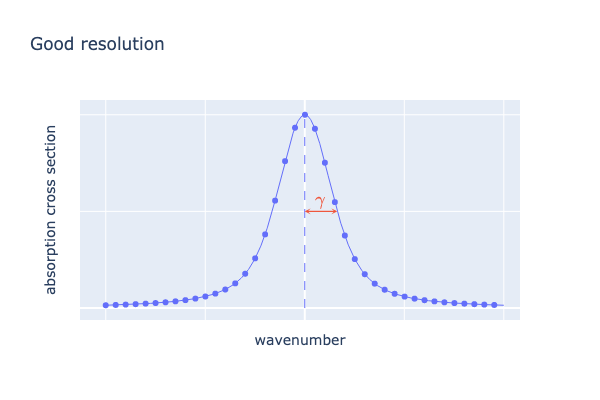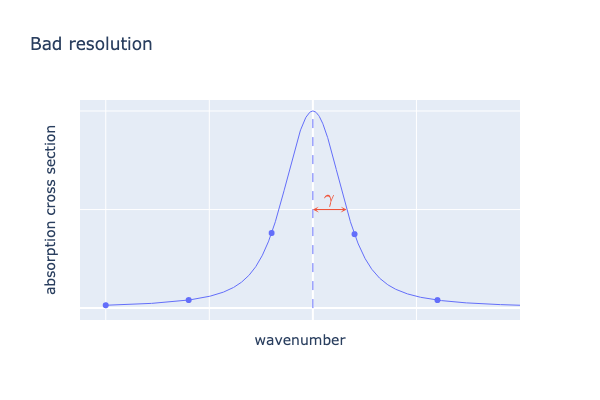Molecular absorption#
There are several models to compute molecular absorption:
the monochromatic model, also known as the line-by-line model,
band models, such as the CKD model [Fu and Liou, 1992].
Currently, Eradiate supports two spectral modes, which are mono and ckd.
In the mono mode, molecular absorption is computed using the monochromatic model.
In the ckd mode, molecular absorption is computed using the CKD model.
Monochromatic model#
In the monochromatic model, the air monochromatic volume absorption coefficient, \(\sigma_{\mathrm a \lambda} \, [L^{-1}]\), due to \(N\) absorbers, is computed using the equation:
where
\(\nu\) is the wavenumber \([L^{-1}]\),
\(p\) is the pressure \([ML^{-1}T^{-2}]\),
\(T\) is the temperature \([\Theta]\),
\(\vec{x}\) is the absorbers volume fraction vector, whose components are the individual absorbers volume fractions in air, \(x_i\) \([/]\),
\(n\) is the air number density \([L^{-3}]\), and
\(C_{\mathrm {ai}}\) is the monochromatic absorption cross section \([L^2]\), of the \(i\)-th absorber.
Note
The sum of the absorbers volume fractions can be less than 1 due to the presence of non-absorbing molecular species in the air, i.e., \(x_i\) must satisfy:
In (1), the monochromatic absorption cross section values \(C_{\mathrm {a}i}\) are computed by interpolating the absorption cross section data set that corresponds to the absorber on the wavenumber, pressure and temperature axes.
Wait, what?#
Indeed, the absorption cross section data set is interpolated on the wavenumber axis.
In theory, interpolating the absorption cross section spectrum of a gas requires the spectrum to have a very high resolution, because the absorption spectrum typically includes numerous fine features, referred to as absorption lines. Absorption lines are characterised by an intensity denoted \(S\) (area under the line curve) and a half-width at half-maximum denoted \(\gamma\), as illustrated below.

In standard conditions (101325 Pa, 300 K), \(\gamma\) is around \(10^{-2} \mathrm{cm}^{-1}\) for CO2 and H2O [Taine et al., 2014], but changes with pressure and temperature (and also with the absorber) and generally decreases with increasing altitudes. In order to resolve each line, the spectrum must be computed at a resolution better than \(\gamma\), e.g. \(3 \, 10^{-3} \mathrm{cm}^{-1}\) if \(\gamma = 10^{-2} \mathrm{cm}^{-1}\). Good and bad spectral resolutions are illustrated below.


Note
At the moment, molecular absorption is only available for the so-called
us76_u86_4 absorber and targets the U.S. Standard Atmosphere, 1976
thermophysical properties.
We are currently working on a solution to make available monochromatic absorption cross section data sets for individual molecules.
CKD model#
Warning
We are not yet done writing this section. Stay tuned for updates!